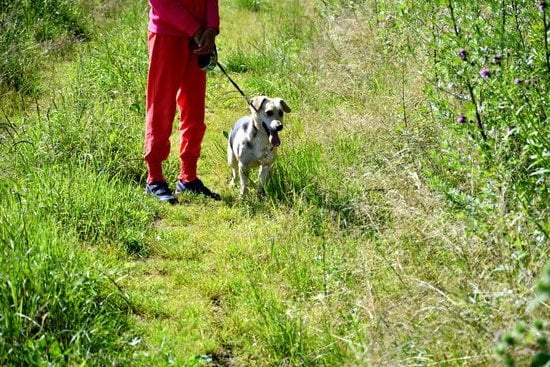Are you tired of playing fetch with your dog, only to have them run off with the ball and not give it back? In this article, we will discuss how to train your dog to give the ball back, allowing for a more interactive and enjoyable game of fetch. Teaching your dog this skill comes with numerous benefits, including exercise, mental stimulation, and strengthening the bond between you and your furry friend.
To effectively train your dog to give the ball back, it is important to choose the right equipment for training. This includes selecting a durable and easy-to-grip ball, as well as using positive reinforcement tools such as treats and toys. Establishing the right mindset for training is also crucial, requiring patience, consistency, and positive reinforcement in creating a positive and encouraging environment for your dog.
In this article, we will guide you through step-by-step instructions for teaching the “drop it” command, using fetch as a training tool, reinforcing the behavior, addressing common challenges that may arise during training, and even advanced training techniques for fine-tuning your dog’s ability to give the ball back. With dedication and persistence in training efforts, both you and your furry friend can enjoy an enhanced bonding experience while engaging in playtime.
Choosing the Right Equipment for Training
When it comes to training your dog to give the ball back, choosing the right equipment is essential for successful and effective training. The first step in selecting the right equipment is choosing the best type of ball for training.
Look for a durable and easy-to-grip ball that is specifically designed for playing fetch with your dog. A ball that is the right size for your dog’s mouth and easy to handle will make it easier for them to learn to retrieve and return it to you.
In addition to the right type of ball, using positive reinforcement tools is crucial for effective training. Treats and toys can be valuable tools for motivating your dog to learn and retain new behaviors. Positive reinforcement rewards good behavior, making it more likely that your dog will repeat the desired action in the future. Incorporating treats or toys as a reward when your dog successfully retrieves and returns the ball will encourage them to continue doing so in the future.
Here are some key tips for choosing the right equipment for training:
- Choose a durable, easy-to-grip ball that is suitable for playing fetch with your dog
- Select treats or toys that motivate your dog as positive reinforcement tools during training
- Consider using a treat pouch or toy holder to keep rewards easily accessible during training sessions
By selecting the appropriate equipment and using positive reinforcement tools, you can set yourself up for success when teaching your dog how to give the ball back during playtime. Remember to stay patient, consistent, and positive throughout this process to create an enjoyable learning experience for both you and your furry friend.
Establishing the Right Mindset for Training
When it comes to training your dog to give the ball back, it’s crucial to approach the task with the right mindset. First and foremost, patience is key. Remember that every dog learns at their own pace, so be patient and understanding throughout the training process. Consistency is another important factor in training your dog. Use the same commands and techniques each time you work with your pet to avoid confusion.
Positive reinforcement is a highly effective method for teaching your dog new behaviors, including giving the ball back. This means using treats, toys, and praise to reward your dog when they exhibit the desired behavior. Creating a positive and encouraging environment during training will make the experience enjoyable for both you and your pet.
It’s essential to also acknowledge that every dog is unique, so be sure to tailor your training methods to suit your dog’s personality and learning style. Some dogs may respond better to certain types of treats or toys as rewards, while others may be more motivated by playtime or verbal praise.
| Mindset | Training |
|---|---|
| Patience | Consistency |
| Positive reinforcement | Tailoring methods |
Teaching the Drop It Command
Teaching your dog the “drop it” command is a crucial step in training them to give the ball back during playtime. This command not only helps you control when your dog releases an object, but it also ensures that they understand the concept of letting go of an item on cue. Here are some steps on how to train your dog to give the ball back by teaching them the “drop it” command.
Step 1: Introducing the Command
Start by holding a treat in one hand and showing your dog a favorite toy or ball in the other. Once your dog takes the toy or ball, say “drop it” and show them the treat. Your dog may naturally release the toy in exchange for the treat, but if not, gently open their mouth while saying “drop it” and then reward them with the treat once they release the item.
Step 2: Repetition and Reinforcement
Repeat this process several times, gradually incorporating just the verbal cue without needing to show a treat every time. Be consistent and patient as you reinforce this behavior with positive rewards each time they successfully drop the ball when commanded to do so.
Step 3: Practice During Playtime
Incorporate this training into your regular play sessions with your dog. When playing fetch, use the “drop it” command each time your dog retrieves the ball. Reward them with praise and treats every time they comply, gradually reducing the frequency of treats as they become more consistent in giving the ball back upon hearing “drop it”.
By following these steps and consistently practicing with your dog, you can effectively train them to give the ball back using the “drop it” command. Remember that patience, consistency, and plenty of positive reinforcement are key to successful training.
Using Fetch as a Training Tool
When training your dog to give the ball back, using the game of fetch as a training tool can be highly effective. This classic game not only provides physical exercise for your dog but also serves as a valuable training opportunity. Here are some tips for using fetch as a training tool:
- Start small: Begin by playing fetch in a controlled environment with minimal distractions. This could be in your backyard or in a quiet area of the park.
- Gradually increase distance: As your dog gets comfortable with bringing the ball back to you, gradually increase the distance of your throws. This will teach your dog to retrieve the ball from farther distances and reinforce the behavior of bringing it back to you.
- Use positive reinforcement: Whenever your dog brings the ball back to you, make sure to reward them with praise, treats, or even playtime with their favorite toy. This will help them understand that bringing the ball back results in positive outcomes.
It’s important to remember that patience and consistency are key when using fetch as a training tool. Your dog may not immediately understand what is expected of them, so it’s crucial to remain patient and provide consistent reinforcement of desired behaviors.
By incorporating fetch into your training routine, you can effectively teach your dog to give the ball back while also providing them with an enjoyable and stimulating activity. With time and dedication, your furry friend will learn this valuable skill and both of you can enjoy countless hours of fun together at the park or in your own backyard.
Reinforcing the Behavior
Once your dog has learned to give the ball back, it’s important to reinforce this behavior consistently. Positive reinforcement is key to maintaining and strengthening this new skill in your furry friend. Praise, treats, and playtime are effective ways to reinforce the behavior of giving the ball back. By using these rewards, you can communicate to your dog that they have done something right and that they will be rewarded for it.
Consistency is also crucial when reinforcing the behavior of giving the ball back. Dogs thrive on routine and predictability, so it’s important to maintain a consistent approach to training. Make sure that everyone in your household is on the same page when it comes to rewarding your dog for giving the ball back. This will prevent confusion for your pet and make the training process more effective.
Another effective way to reinforce the behavior of giving the ball back is by incorporating it into playtime activities. Use the game of fetch as an opportunity to practice this skill with your dog. Every time your dog brings the ball back, make sure to provide praise and reward them with a treat or extra playtime. This will not only strengthen their understanding of the command but also make training an enjoyable bonding experience for both you and your pet.
| Reinforcing Methods | Effectiveness |
|---|---|
| Praise | Highly effective in reinforcing positive behavior |
| Treats | Provides a tangible reward for obedience |
| Playtime | Makes training an enjoyable bonding experience between owner and pet |
Troubleshooting Common Challenges
Training your dog to give the ball back can be a fun and rewarding experience, but it may come with some challenges along the way. It’s important to address these challenges with patience and persistence in order to effectively train your furry friend. One common challenge that you may encounter is a lack of interest from your dog in returning the ball.
This can be frustrating, but it’s important to remember that every dog learns at their own pace. One way to overcome this issue is by using high-value treats or toys as an incentive for your dog to return the ball. By offering a reward that is more appealing than holding onto the ball, you can motivate your dog to give it back to you.
Distractions can also pose a challenge when training your dog to give the ball back. Whether it’s other dogs at the park or interesting scents in the environment, distractions can make it difficult for your dog to focus on returning the ball.
To overcome this challenge, start training in an environment with minimal distractions and gradually increase the level of distraction as your dog becomes more proficient at giving the ball back. This gradual approach will help build your dog’s focus and obedience over time.
Another common challenge when teaching your dog to give the ball back is stubborn behavior. Some dogs may simply refuse to give up the ball, especially if they view it as a prized possession. In such cases, it’s important not to resort to forceful methods, as this can damage the trust between you and your pet.
Instead, use positive reinforcement techniques and plenty of patience to encourage your dog to let go of the ball willingly. With consistency and positive reinforcement, even stubborn dogs can be trained to return the ball on command.
Advanced Training Techniques
When it comes to teaching your dog to give the ball back, there are advanced training techniques that can help fine-tune your pet’s ability to master this skill. These techniques can add an extra layer of challenge and fun to the training process, while also strengthening the bond between you and your furry friend.
Using Multiple Balls
One advanced technique for training your dog to give the ball back is to incorporate multiple balls into the training session. Start by introducing two identical balls and encouraging your dog to retrieve one while holding onto the other.
Once your dog has successfully retrieved the first ball, use a command such as “drop it” or “give” and reward them with a treat when they release the ball in exchange for the second one. This exercise helps reinforce the behavior of giving the ball back while also introducing an element of choice for your dog.
Incorporating Different Commands
Another advanced training technique is to incorporate different commands into the training process. For example, you can teach your dog to drop the ball into a designated container or area instead of directly into your hand.
This adds an extra level of precision and focus to their retrieval and release actions. By using distinct verbal cues for each action, such as “drop” for releasing the ball into your hand and “place” for dropping it into a container, you can expand your dog’s understanding of commands and further refine their behavior.
Increasing Distractions and Challenges
As your dog becomes more proficient at giving the ball back, consider increasing distractions and challenges during training sessions. This could involve practicing in different environments, adding background noise or movement, or introducing other toys or objects alongside the ball. By gradually increasing distractions and challenges, you can help ensure that your dog’s ability to give the ball back remains strong in various situations.
Implementing these advanced training techniques can help take your dog’s skill in giving the ball back to a new level while deepening your bond with them through engaging training sessions. With patience, consistency, and positive reinforcement, you’ll find that these advanced techniques are not only effective but also enjoyable for both you and your furry friend.
Conclusion
In conclusion, training your dog to give the ball back is not only a practical skill but also a great way to bond with your pet. By understanding the importance of this training and choosing the right equipment, you can set the stage for successful training sessions. Establishing the right mindset for both you and your dog is crucial, as patience, consistency, and positive reinforcement are key elements in teaching your furry friend to give the ball back.
One effective way to train your dog is by teaching the “drop it” command and using fetch as a training tool. These methods can help reinforce the behavior of giving the ball back while also providing mental stimulation for your pet. Additionally, it’s important to reinforce this behavior consistently using praise, treats, and playtime as rewards.
As you embark on this training journey with your dog, remember that challenges may arise, such as distractions or lack of interest. However, staying patient and implementing troubleshooting tips will help you overcome these hurdles. Finally, advanced training techniques can be used to fine-tune your dog’s ability to give the ball back. Overall, by being patient and consistent in your efforts, you can enjoy the benefits of having a well-trained dog who loves playing fetch.
Frequently Asked Questions
How Do You Train a Dog to Bring the Ball Back?
Training a dog to bring the ball back involves positive reinforcement and patience. Start with teaching the “fetch” command, encourage the dog to grab the ball, and then call them back to you, rewarding them when they return with the ball.
Why Does My Dog Not Give the Ball Back?
A dog may not give the ball back due to several reasons, such as possessiveness, lack of training, or simply not understanding what is expected. It’s important to address any behavioral issues and use consistent training techniques to encourage them to return the ball.
How Do You Get a Ball Back From a Dog?
Getting a ball back from a dog requires using commands they understand, such as “drop it” or “give.” Offering a treat in exchange for the ball can also be effective. It’s essential to avoid chasing or forcefully taking the ball from your dog to prevent reinforcing negative behaviors.

Welcome to the blog! I am a professional dog trainer and have been working with dogs for many years. In this blog, I will be discussing various topics related to dog training, including tips, tricks, and advice. I hope you find this information helpful and informative. Thanks for reading!





